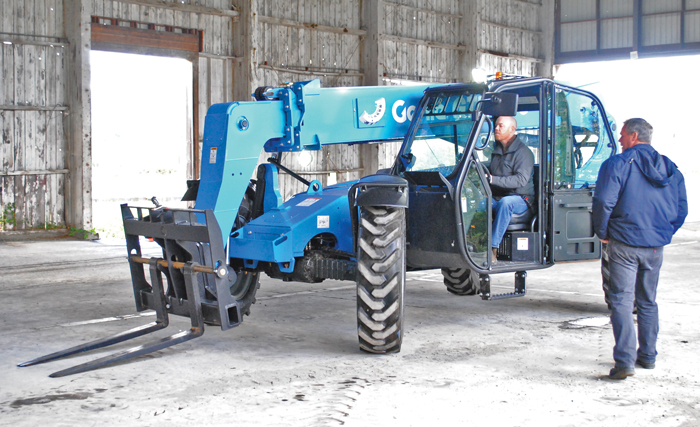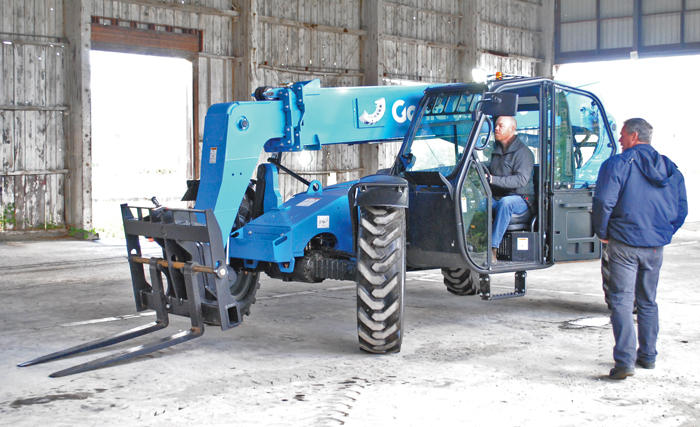Companies across a plethora of industries regularly make use of the incredible versatilities of a telehandler. From construction yards to farms, these industry workhorses can be found across the country.
Whilst expensive to procure brand new, many companies opt to lease their telehandlers from firms such as www.ukforks.com. The benefits are far reaching; there’s no large initial capital expenditure, a lot of the maintenance work is transferred to the leasing company and firms can quickly respond to an influx in demand by leasing more machines.
With that in mind, it is important to be smart when hiring a telehandler to ensure you get value for money and the most out of the vehicles whilst you have them on site. This guide offers up a handful of useful tips to save you money and ensure you can respond to the demands your business throws up quickly and effectively.

Utilise different attachments
One of the things that make a telehandler so versatile is ability to use one of a range of different attachments. One minute you could have a machine geared up for moving pallets around your yard, the next it could be used to lift workmen up to hard to reach areas of your site. Investing or leasing a solid arsenal of attachments is therefore imperative if you hope to get the best out of your telehandler.
Common attachments include the fork (as found on a forklift truck), the bucket (ideal for shovelling and transporting loose materials) and the lifting platform (designed to move people rather than material). That said, there is an entire range available; search online or ask your leasing company what they have to offer.
Build a relationship with your leasing firm
As in most areas of business, relationships are of paramount importance when it comes to the effective leasing of a telehandler. By building up a solid working relationship with your leasing firm you’ll be able to quickly respond to increase demands, you’ll have access to better rates and you’ll also find the firm willing to help with issues such as maintenance or extended leases.
If you have a good relationship with your leasing firm they’re far more likely to help you out at short notice or when things go wrong.
Negotiate suitable lease lengths
This point links back to the previous in some ways, as your relationship with the leasing firm is likely to affect your ability to negotiate a suitable and cost effective lease. Something many companies fall foul of though is getting the lease lengths wrong and either having to overpay, either through last minute lease extensions or by having a telehandler sat around on site when it is no longer required.
Some lease firms will allow flexible lease lengths, which can be valuable if there is uncertainty in how long a job is likely to take. Careful and accurate planning should be undertaken, however, to minimise this uncertainty and help you secure a lease for the right length of time.
Hire the right staff
Having the right people on your side is absolutely essential if you are going to get the most out of your telehandler lease, and this manifests itself in a number of ways. Firstly, you want adequately trained, competent individuals who know how to operate a telehandler safely and effectively in order to get jobs completed in a timely manner. Furthermore, you need staff with the right attitude who are driven and focused on completing jobs to a high standard but also in a tight time frame.
On the other hand, hiring staff who do not have the right training or who lack the necessary attitude can end up costing your firm dearly in lost productivity. In the worst case, such individuals can actually pose a safety hazard on your site.
Keep your fleet in top working condition
Finally, carry out regular inspections of your telehandlers to ensure they are in top working condition. This means checking things such as the hydraulics, the tyre pressures and the boom before every job and reporting any defects or causes for concern immediately.
Depending on the lease deal, you’ll either need to have defects fixed yourself or return the telehandler to the leasing company for repair. This is another scenario where a close working relationship with your leasing company can minimise downtime and mitigate the risk of you having a telehandler breakdown whilst onsite.



